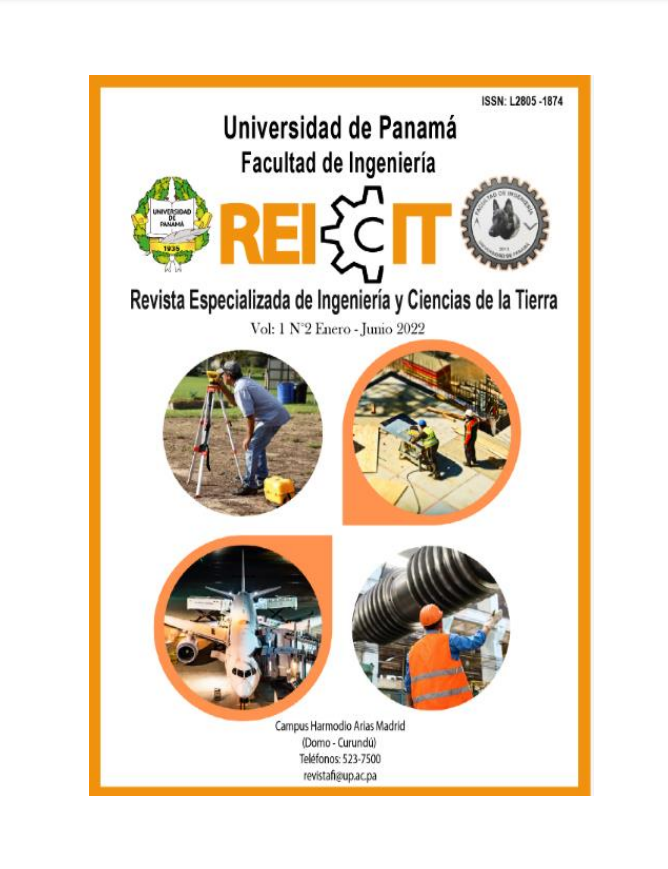References
Abello-Romero, J. B., Sáez San Martín, W. y Mancilla, C. (2021). Evaluación del desempeño de las universidades: el aporte de los rankings mundiales. Revista Hallazgos, 18(35), 55-75.
https://doi.org/10.15332/2422409X.5792
Aznar Minguet, P., Martínez-Agut, Ma P., Ull, Ma Á. & Piñero, A. (2017). Evaluar para transformar: evaluación de la docencia universitaria bajo el prisma de la sostenibilidad.
Revista Enseñanza de las Ciencias, 35(1), 5-27.
Cardona Mejía, L. Ma (2021). Percepciones de docentes frente al cambio en tiempos de pandemia.
Revista Educación y Ciencia, (25), 1-25. https://doi.org/10.19053/0120-7105.eyc.2021.25.
Cué-Cedeño, D., Jocik-Hung, G. & Vásquez-Mojena, L. (2020). Sistema de gestión universitaria y mejora continua en la Universidad de Granma. Revista Educación y Sociedad, 18(2), 31-45.
Figueroa Céspedes, I. & Muñoz Martínez, Y. (2014). La Guía para Inclusión Educativa como herramienta de autoevaluación institucional: Reporte de una experiencia. Revista Latinoamericana de Educación, 8(2), 179-198.
Flores Nessi, E.Ma, Loaiza Falcón, A. C. & Rojas de Ricardo, G. N. (2020). Rol del docente investigador desde su práctica social. Revista Scientific, 5(15), 106-128.
Franco Idárraga, F. (2019). UI GreenMetric World University Ranking. Boletín Ambiental, (153), 1-9. file:///D:/Downloads/boletin153.pdf
Ganga-Contreras, F. A., Sáez San Martín, W., Rodríguez Ponce, E., Calderón, A. I. & Wandercil, M. (2018). Universidades públicas de Chile y su desempeño en los rankings académicos nacionales. Revista Fronteiras, 7(3), 316-341. Doi: http//dx.doi.org/10.21664/2238-8869.2018v7i3.
García-Gutiérrez, Z. del P. & Aznar-Díaz, I. (2018). El desarrollo de competencias investigativas,
una alternativa para formar profesionales en pedagogía infantil como personal docente investigador. Revista Electrónica Educare, 23(1), 1-22. doi:
http://dx.doi.org/10.15359/ree.23-1.15
González García, G. (2021). Incidencia del trabajo colaborativo de docentes universitarios en el contexto de la acreditación internacional. Revista Ride, 12(22), 1-28.
https://doi.org/10.23913/ride.v11i22.834.
Guillén Vivas, X., Almuiñas Rivero, J. L., Galagarza López, J., Alarcón Ramírez, L., Loor Ávila,
K. & Gallegos Macías, M. (2018). Autoevaluación institucional con fines de acreditación
en las instituciones de educación superior en América Latina. Revista Educación Médica Superior, 32(1). http://ems.sld.cu/index.php/ems/article/view/1393/634
Hernández, H. A. & Pascual Barrera, A. E. (2018). Validación de un instrumento de investigación
para el diseño de una metodología de autoevaluación del sistema de gestión ambiental.
Revista RIAA, 9(1), 157-164. DOI: https://doi.org/10.22490/21456453.2186
Juárez-Hernández, L. G. & Tobón, S. (2018). Análisis de los elementos implícitos en la validación
de contenido de un instrumento de investigación. Revista Espacios, 39(53), 23-30.
https://www.revistaespacios.com/cited2017/cited2017-23.pdf
Jürgen, E. (2015). Una “carrera armamentista” en la academia: los rankings internacionales y la competencia global para crear universidades de clase mundial. Revista RESU, 4(176), 83-109.
López Fernández, R., Avello Martínez, R., Palmero Urquiza, D. E., Sánchez Gálvez, S. & Quintana
Álvarez, M. (2019). Validación de instrumentos como garantía de la credibilidad en las investigaciones científicas. Revista Cubana de Medicina Militar, 48(2), 441-450.
http://scielo.sld.cu/pdf/mil/v48s1/1561-3046-mil-48-s1-e390.pdf
Losio, M. S. & Macri, A. (2015). Deserción y rezago en la Universidad. Indicadores para la autoevaluación. Revista Latinoamericana de Políticas y Administración de la Educación, 2(3), 114-126.
Martínez Ramírez, J. L. (2019). El proceso de elaboración y validación de un instrumento de medición documental. Acción y Reflexión Educativa, (44), 50-63.
Oblitas Díaz, J. R. (2015). Autoevaluación institucional según el modelo de la calidad educativa del IPEBA, para elaborar el plan de mejora de la institución educativa “Ramón Castilla y Marquesado” N°16001-Jaén; 2014 (tesis de grado). Universidad Nacional de Cajamarca. Cajamarca-Perú.
Silvestre Miraya, I. & Huamán Nahula, C. (2019). Pasos para elaborar la investigación y la
redacción de la tesis universitaria. Editorial San Marcos.
http://www.repositorio.utea.edu.pe/bitstream/handle/utea/195/Pasos%20para%20elaborar%20la%20investigaci%c3%b3n%20y%20la%20redacci%c3%b3n%20de%20la%20tesis%20universitaria.pdf?sequence=3&isAllowed=y
Soriano Rodríguez, A. Ma (2014). Diseño y validación de instrumentos de investigación. Editorial Universitaria Don Bosco, 8(13), 19-40.
Supo, J. (2013). Cómo validar un instrumento. Aprende a crear y validar instrumentos como un experto. Biblioteca Nacional de Perú.
Rojas Salazar, A. (2016). Autoevaluación y su implicancia en el mejoramiento de la gestión universitaria de la carrera de Enfermería: una acción participativa para la transformación. Revista Ciencia y Arte de Enfermería, 1(2), 29-33.
Toala-Toala, G. Ma L. & Mendoza Briones, A. A. (2019). Importancia de la enseñanza de la
metodología de la investigación científica en las ciencias administrativas. Revista Dominio
Científico, 5(2), 56-70. http://dx.doi.org/10.23857/dom.cien.pocaip.2019.5.2.abril.56-43.
Villaseñor Becerra, J. I., Moreno Arellano, C. I. & Flores Orozco, J. E. (2015). Perspectivas actuales sobre los rankings mundiales de universidades. Revista RESU, 3(175), 41-67.
Zuñiga-Jara, S. & Sjoberg-Tapia, O. (2021). Gobierno corporativo y desempeño en las universidades chilenas. Revista Formación Universitaria, 14(1), 3-12.
http://dx.doi.org/10.4067/S0718-50062021000100003

